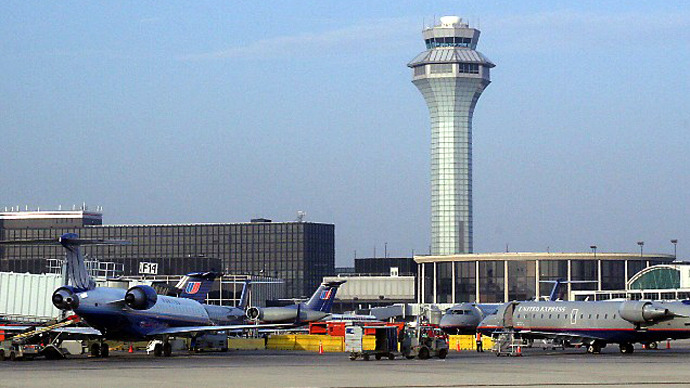Flying Blind: Sequester forces closure of 149 air traffic control towers

The Federal Aviation Administration announced Friday that the automatic budget cuts required under the national sequestration will force the agency to shut down 149 air traffic control towers throughout the US.
The towers, all of which are run by private contractors, are currently operating at small to mid-sized airports. The hardest hit state will be Florida, which will have to cope with the loss of 14 towers, including in Naples and Boca Raton. Following Florida is Texas, which will see 13 towers closed, and California with 11.
The looming shutdowns mean over half of the 251 privately-run towers in the US will be affected, though this round tentatively spares government-run towers.
Under constraints posed by the sequester, the FAA had to make $637 million in cuts from its $16 billion budget for the remainder of its fiscal year. The shutdowns will be spread out over a four-week period, with some 750 to 1,100 air traffic controller and supervisory positions slated to be cut.
Many of the smaller airports facing the cuts handle lighter traffic, where pilots will now be charged with personally communicating and coordinating with each other over a shared radio frequency before landing.
While pilots are often required to land at the country's small airports without the help of a control tower, critics of the looming shutdowns mourn the loss of the additional safety layer to prevent both runway taxiing and midair collisions.
After a 19-seat United Express flight landing in Quincy, Illinois collided with another turboprop aircraft in the midst of takeoff, a Quincy airport official believed that the accident, which resulted in the deaths of all 14 passengers in both planes, could have been prevented by an air traffic control tower, AP reported at the time. In the end, the National Transportation Safety Board concluded that the accident was likely due to a pilot's error in monitoring the common radio frequency.
The cuts come as part of the sequester that followed a stalemate
last year between the rivaling Democrats and Republicans on how to
cut $1.5 trillion from the US federal budget, resulting in a series
of “automatic” budget cuts now set to kick in under broad and
arbitrary guidelines.
In addition to tower closures, all 15,000 controllers currently employed by the FAA will face cuts in working time, with a required unpaid day off every two weeks, Bloomberg reports. The policy could well lead to greater delays at the country’s most congested airports.
And with overnight shifts potentially up for elimination at an additional 72 control towers, full-size aircraft operated by commercial carriers like Delta and Southwest may be forced to land at busier airports like Chicago’s Midway without any tower assistance.
Airports will have the option to independently cover the
operating costs of their towers in order to keep them running,
though it seems unlikely that most will have the necessary
resources.














